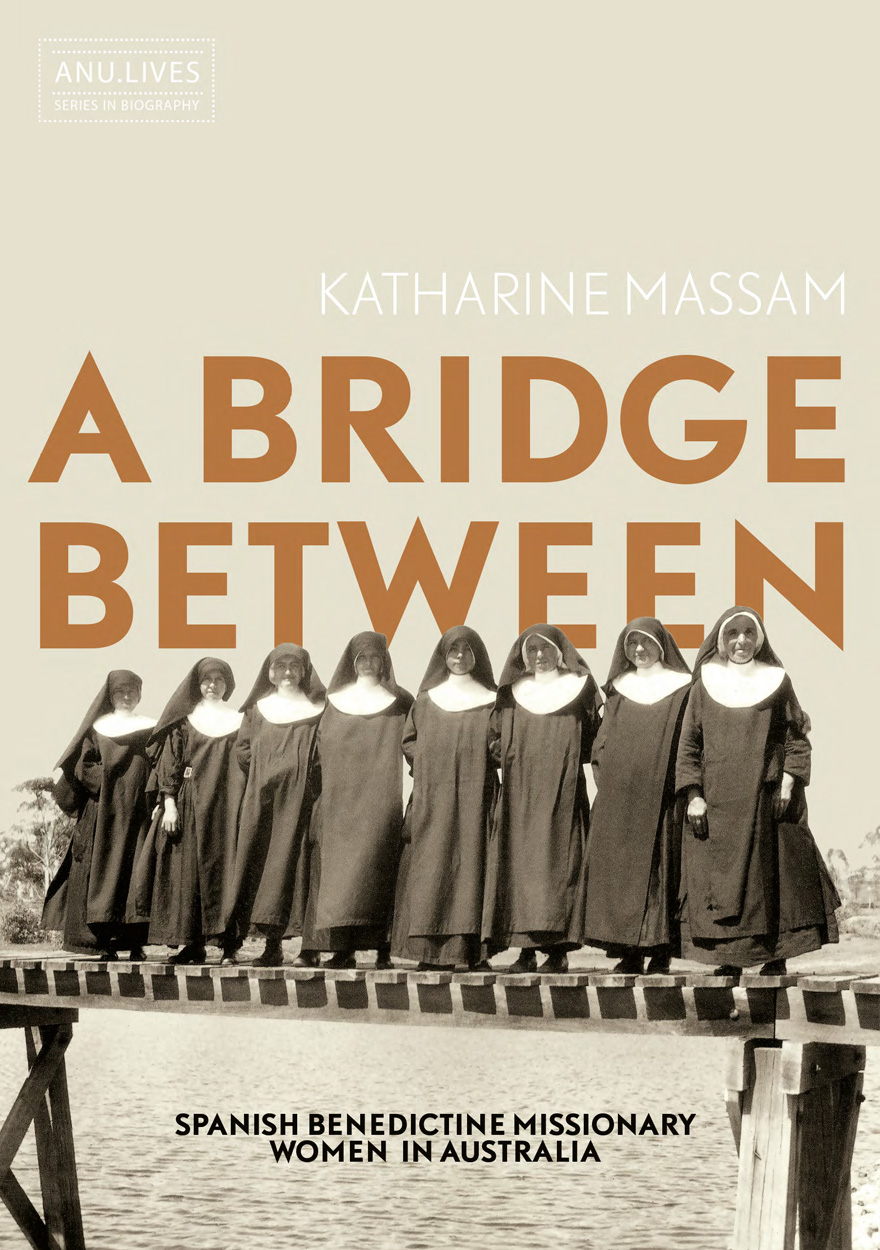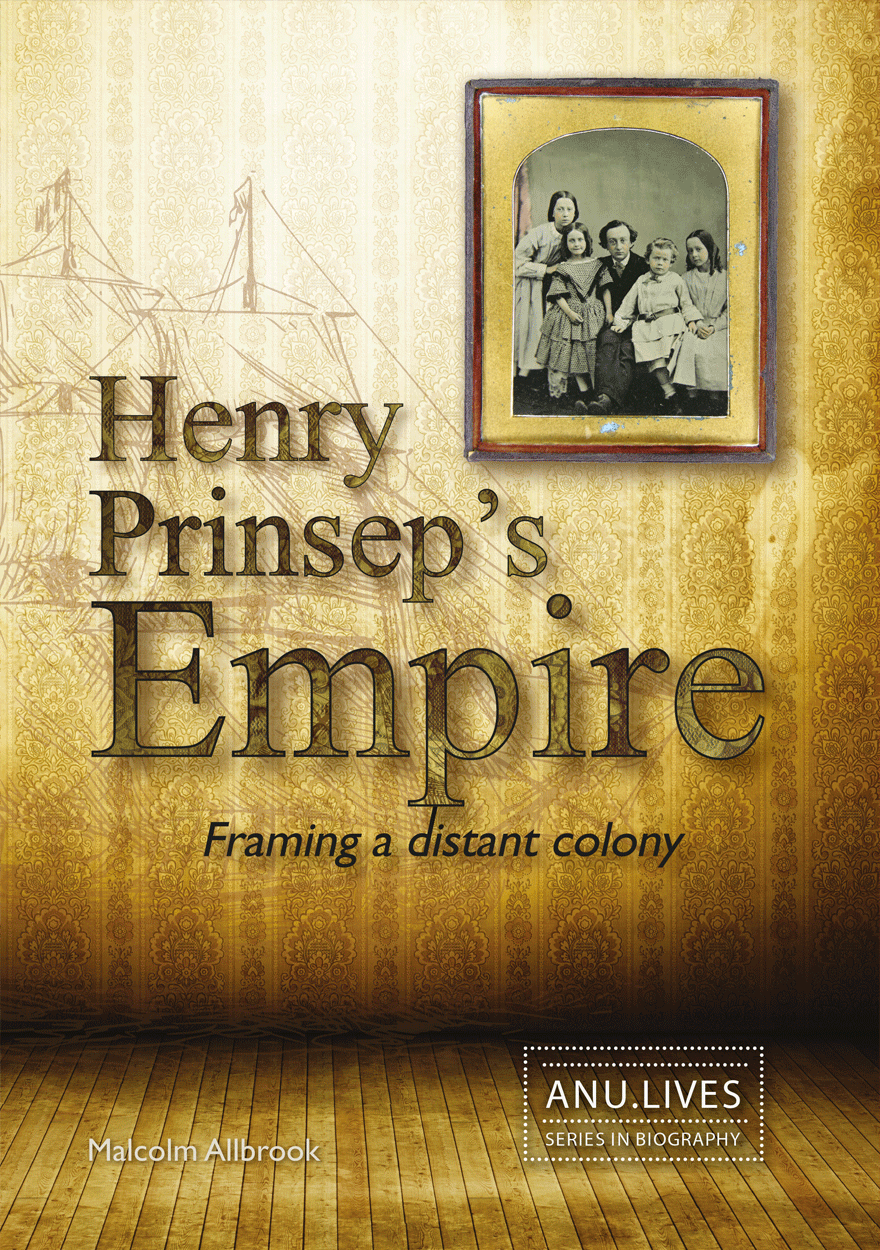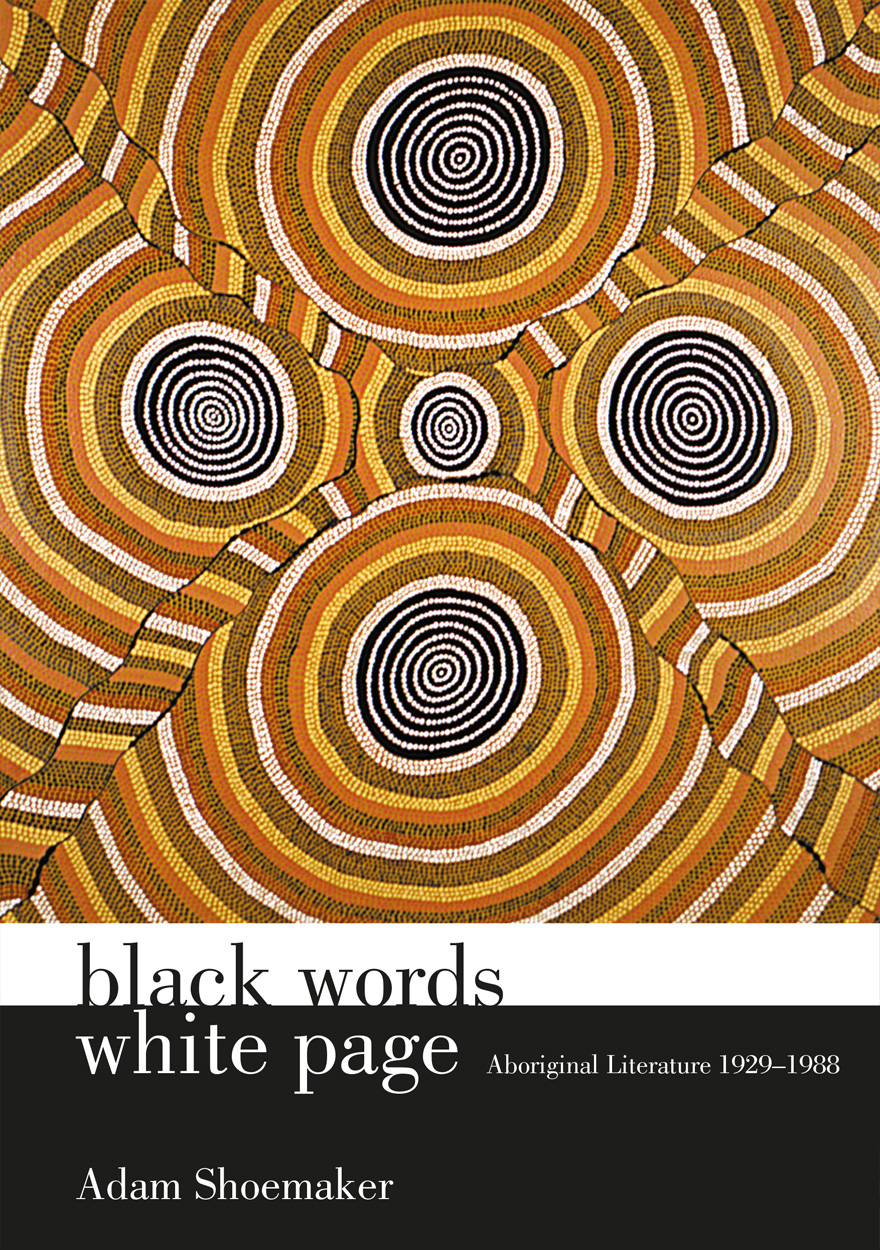Search titles
Displaying results 91 to 100 of 108.

Ebenezer Mission Station, 1863–1873 »
The Diary of Missionaries Adolf and Polly Hartmann
Edited by: Felicity Jensz
Publication date: July 2023
This book contains the annotated diary of Adolf and Mary (Polly) Hartmann, missionaries of the Moravian Church who worked at the Ebenezer mission station on Wotjobaluk country, in the north-west of the Colony of Victoria, Australia. The diary begins in 1863, as the Hartmanns are preparing to travel from Europe to take up their post, and ends in 1873, by which time they are working in Canada as missionaries to the Lenni Lenape people.
Recording the Hartmann’s eight years at the Ebenezer mission, the diary presents richly detailed insights into the daily interactions between Aboriginal people and their colonisers. The inhabitants of the mission are overwhelmingly described in the diary as agents in their lives, moving in and out of the missionaries’ sphere of influence, yet restricted at times by the boundaries of the mission. The diary reveals moments of laughter, shared grief, community, advocacy and reciprocal learning, alongside the mundane everyday chores of mission life.
Through the personal writings of a missionary couple, this diary brings to light the regular, routine and extraordinary events on a mission station in Australia in the third quarter of the nineteenth century—a period just prior to British high imperialism, and a period before increasingly restrictive legislation was enforced on Indigenous people in the Colony of Victoria.

Indigenous Intermediaries »
New perspectives on exploration archives
Publication date: September 2015
This edited collection understands exploration as a collective effort and experience involving a variety of people in diverse kinds of relationships. It engages with the recent resurgence of interest in the history of exploration by focusing on the various indigenous intermediaries – Jacky Jacky, Bungaree, Moowattin, Tupaia, Mai, Cheealthluc and lesser-known individuals – who were the guides, translators, and hosts that assisted and facilitated European travellers in exploring different parts of the world.
These intermediaries are rarely the authors of exploration narratives, or the main focus within exploration archives. Nonetheless the archives of exploration contain imprints of their presence, experience and contributions. The chapters present a range of ways of reading archives to bring them to the fore. The contributors ask new questions of existing materials, suggest new interpretive approaches, and present innovative ways to enhance sources so as to generate new stories.
‘This is a very fine collection of essays. It offers a deep and richly textured assessment of the crucial work of indigenous intermediaries in imperial and colonial exploration.’
— Professor Tony Ballantyne, University of Otago, New Zealand

Indigenous Songs of Victoria »
Publication date: 2025
Indigenous Songs of Victoria seeks to do justice to the songsters, the clever men and women of traditional Indigenous societies who made these artistic treasures, as well as to the many people who have valued, written down or otherwise recorded these songs, so that they can be heard, read and delighted in today.
The rich diversity of Indigenous songs collected in this book is a cultural treasure of Victoria and Australia. The authors bring together here well over 100 different song texts with musical transcriptions and analysis, cultural context and, for many, translations.
This volume brings the rich knowledge and artistic skill of the song-makers of Indigenous Victoria to a wider audience and makes the sources of these songs, in manuscripts, old journals and sound recordings, accessible, often for the first time.
Coming soon
Notify me
A Bridge Between »
Spanish Benedictine Missionary Women in Australia
Authored by: Katharine Massam
Publication date: October 2020
This sensitive account of Spanish Benedictine women at an Aboriginal mission in Western Australia is poignant and disturbing. Notable for its ecumenical spirit, depth of research and deep engagement with the subject, A Bridge Between is a model of how religious history, in its broader bearings, can be written.
— Graeme Davison, Monash University
With great insight and care, A Bridge Between presents a sympathetic but not uncritical history of the lives of individuals who have often been invisible. The story of the nuns at New Norcia is a timely contribution to Australia’s religious history. Given the findings of the Royal Commission, it will be widely read both within and beyond the academy. History is, here, a spiritual discipline, and an exercise in hope and reconciliation.
— Laura Rademaker, The Australian National University
A Bridge Between is the first account of the Benedictine women who worked at New Norcia and the first book-length exploration of twentieth-century life in the Western Australian mission town. From the founding of a grand school intended for ‘nativas’, through links to Mexico and Paraguay then Ireland, India and Belgium, as well as to their house in the Kimberley, and a network of villages near Burgos in the north of Spain, this is a complex international history. A Bridge Between gathers a powerful, fragmented story from the margins of the archive, recalling the Aboriginal women who joined the community in the 1950s and the compelling reunion of missionaries and former students in 2001. By tracing the all-but-forgotten story of the community of Benedictine women who were central to the experience of the mission for many Aboriginal families in the twentieth century, this book lays a foundation for further work.

Law's Anthropology »
From ethnography to expert testimony in native title
Authored by: Paul Burke
Publication date: November 2011
Anthropologists have been appearing as key expert witnesses in native title claims for over 20 years. Until now, however, there has been no theoretically-informed, detailed investigation of how the expert testimony of anthropologists is formed and how it is received by judges. This book examines the structure and habitus of both the field of anthropology and the juridical field and how they have interacted in four cases, including the original hearing in the Mabo case. The analysis of background material has been supplemented by interviews with the key protagonists in each case. This allows the reader a unique, insider’s perspective of the courtroom drama that unfolds in each case. The book asks, given the available ethnographic research, how will the anthropologist reconstruct it in a way that is relevant to the legal doctrine of native title when that doctrine gives a wide leeway for interpretation on the critical questions: what is the relevant grouping, what can be counted as a traditional law and when has there been too much change of tradition? How will such evidence be received by judges who are becoming increasingly sceptical about experts tailoring their evidence to suit the party which called them? This book answers these questions by assuming that there is more at stake here than the mere performance of roles. Rather, there is a complex interaction of distinct social fields each with its own habitus, and individual actors are engaged in an active and constructive agency, however subtle, which the painstaking research for this book uncovers.

The Archaeology of Rock Art in Western Arnhem Land, Australia »
Publication date: November 2017
Western Arnhem Land, in the Top End of Australia’s Northern Territory, has a rich archaeological landscape, ethnographic record and body of rock art that displays an astonishing array of imagery on shelter walls and ceilings. While the archaeology goes back to the earliest period of Aboriginal occupation of the continent, the rock art represents some of the richest, most diverse and visually most impressive regional assemblages anywhere in the world. To better understand this multi-dimensional cultural record, The Archaeology of Rock Art in Western Arnhem Land, Australia focuses on the nature and antiquity of the region’s rock art as revealed by archaeological surveys and excavations, and the application of novel analytical methods. This volume also presents new findings by which to rethink how Aboriginal peoples have socially engaged in and with places across western Arnhem Land, from the north to the south, from the plains to the spectacular rocky landscapes of the plateau. The dynamic nature of Arnhem Land rock art is explored and articulated in innovative ways that shed new light on the region’s deep time Aboriginal history.

Henry Prinsep's Empire »
Framing a distant colony
Authored by: Malcolm Allbrook
Publication date: September 2014
Henry Prinsep is known as Western Australia’s first Chief Protector of Aborigines in the colonial government of Sir John Forrest, a period which saw the introduction of oppressive laws that dominated the lives of Aboriginal people for most of the 20th century.
But he was also an artist, horse-trader, member of a prominent East India Company family, and everyday citizen, whose identity was formed during his colonial upbringing in India and England. As a creator of Imperial culture, he supported the great men and women of history while he painted, wrote about and photographed the scenes around him. In terms of naked power he was a middle man, perhaps even a small man. His empire is an intensely personal place, a vast network of family and friends from every quarter of the British imperial world, engaged in the common tasks of making a home and a career, while framing new identities, new imaginings and new relationships with each other, Indigenous peoples and fellow colonists. This book traces Henry Prinsep’s life from India to Western Australia and shows how these texts and images illuminate not only Prinsep the man, but the affectionate bonds that endured despite the geographic bounds of empire, and the historical, social, geographic and economic origins of Aboriginal and colonial relationships which are important to this day.

Black Words White Page »
Aboriginal Literature 1929–1988
Authored by: Adam Shoemaker
Publication date: March 2004
Fifteen years after its first publication, Black Words White Page remains as fresh as ever. This award-winning study – the first comprehensive treatment of the nature and significance of Indigenous Australian literature – was based upon the author’s doctoral research at The Australian National University and was first published by UQP in 1989. Adam Shoemaker combines historical and literary analysis as he explores the diversity and difference of writings that have gained increasing strength and visibility since that time. Shoemaker’s special focus is those dynamic years between 1963 and 1988, when advances in Indigenous affairs were paralleled by a rapid growth of all types of Black Australian literature. He examines the achievements of leading figures in the Aboriginal movement such as Jack Davis, Kevin Gilbert, Charles Perkins and Oodgeroo. He also provides intriguing insights into the socio-political contexts of the time while tracing the history of black-white relations in Australia. Black Words White Page also offers some provocative re-evaluations of white Australian writers Xavier Herbert, Ion Idriess, Katharine Susannah Prichard, Patrick White and Judith Wright.
Winner of the 1990 Walter McRae Russell Award of the Association for the Study of Australian Literature

Teaching ‘Proper’ Drinking? »
Clubs and pubs in Indigenous Australia
Authored by: Maggie Brady
Publication date: December 2017
In Teaching ‘Proper’ Drinking?, the author brings together three fields of scholarship: socio-historical studies of alcohol, Australian Indigenous policy history and social enterprise studies. The case studies in the book offer the first detailed surveys of efforts to teach responsible drinking practices to Aboriginal people by installing canteens in remote communities, and of the purchase of public hotels by Indigenous groups in attempts both to control sales of alcohol and to create social enterprises by redistributing profits for the community good. Ethnographies of the hotels are examined through the analytical lens of the Swedish ‘Gothenburg’ system of municipal hotel ownership.
The research reveals that the community governance of such social enterprises is not purely a matter of good administration or compliance with the relevant liquor legislation. Their administration is imbued with the additional challenges posed by political contestation, both within and beyond the communities concerned.
‘The idea that community or government ownership and management of a hotel or other drinking place would be a good way to control drinking and limit harm has been commonplace in many Anglophone and Nordic countries, but has been less recognised in Australia. Maggie Brady’s book brings together the hidden history of such ideas and initiatives in Australia … In an original and wide-ranging set of case studies, Brady shows that success in reducing harm has varied between communities, largely depending on whether motivations to raise revenue or to reduce harm are in control.’
— Professor Robin Room, Director, Centre for Alcohol Policy Research, La Trobe University
In the Media
Read the Alice Spring News article: ‘Proper’ drinking: elusive goal but how hard have we tried?
Awards
Shortlisted – 2019 Chief Minister's Northern Territory History Book Award

Reaching for Health »
The Australian women’s health movement and public policy
Authored by: Gwendolyn Gray Jamieson
Publication date: January 2012
The women’s health movement shocked and scandalised when it burst into Australian politics in the early 1970s. It cast the light of day onto taboo subjects such as sexual assault, abortion and domestic violence, provoking outrage and condemnation. Some of the services women created for themselves were subjected to police raids; sex education material was branded ‘indecent’. Moreover, women dared to criticise revered institutions, such as the medical system. Yet for all its perceived radicalism, the movement was part of a much broader and relatively conventional international health reform push, which included the ‘new’ public health movement, the community health centre movement and, in Australia, the Aboriginal health movement, all of which were critical of the way medical systems had been organised during the 20th century. The women who joined the movement came from diverse backgrounds and included immigrant and refugee women, Aboriginal women and Anglo women. Initially, groups worked separately for the most part but as time went on, they found ways to cooperate and collaborate. This book presents an account of the ideas, the diverse and shared efforts and the enduring hard work of women’s health activists, drawn together in one volume for the first time. This relentless activism gradually had an impact on public policy and slowly brought forth major attitudinal changes. The book also identifies the opportunities for health reform that were created along the way, opportunities which deserve to be more fully embraced.



